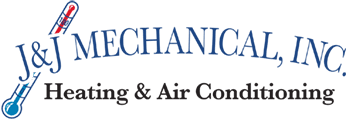How Do Heat Pumps Work in Kinston, NC?
Heat pumps are an increasingly popular heating and cooling solution for homes throughout Kinston, NC. They’re an eco-friendly alternative to other options because they use a limited amount of electricity and don’t burn fossil fuels. Read on for more about how heat pumps operate and why they’re a fantastic option for cooling and heating your home.
What Kinds of Heat Pumps Are There?
The most popular type of heat pump, an air-source heat pump, tends to be in areas where temperatures rarely get below freezing. They draw heat from the outside air and push it into your house through coils filled with refrigerant.
Geothermal heat pumps, also referred to as ground-source heat pumps, absorb thermal energy via underground tubing loops. They often cost less than other heat pump options.
There are also water-source heat pumps. They utilize water as a heat source and are great for buildings with easy access to vast amounts of water.
If you’re unsure which heat pump would be best for your home, schedule an appointment with an HVAC service technician. They can review your options with you and help you make a decision.
What Are the Key Components of a Heat Pump?
Learning more about how key components of a heat pump work can give you a better understanding of the system as a whole. Some essential parts of a conventional heat pump include:
- Reverse valve: The reversing valve switches refrigerant flow between the indoor and outside coils. It’ll either operate in heating or cooling mode.
- Compressor: The compressor pumps the refrigerant through the system while pressurizing it and raising its temperature. It moves in between the outdoor unit and the evaporator that’s indoors.
- Evaporator: The evaporator functions as a heat exchanger. Refrigerant makes its way into it in liquid form and then turns into a vapor.
- Condenser: The condenser, which is outside, lets go of or accumulates heat. Refrigerant vapor goes in and then turns into a liquid.
How Do Heat Pumps Work?
The idea behind how heat pumps operate is to move heat from one place to another. Heat transfers from a heat source like the ground or outside air to the interior of your home. Heat pumps can also reverse the process to make your house feel cool by removing heat from the interior and sending it outside.
How a Heat Pump Operates: Cooling Mode
In cooling mode, the heat pump system extracts heat from the air within your home and releases it outside. The refrigerant first enters the evaporator coil within the system’s indoor unit. It then absorbs the heat from the warm air in your home as it passes over the evaporator coil and turns it into a low-pressure gas.
The refrigerant gas then goes to the system’s outside unit, where the compressor compresses it and raises its temperature and pressure before pumping it into the condenser coil. The condenser coil releases heat into the surrounding air when the compressed refrigerant passes through it, converting it back into liquid. The cooling cycle gets repeated by returning the liquid refrigerant to the interior unit.
How a Heat Pump Operates: Heating Mode
The heat pump system draws heat from the outside air in order to move heat indoors. Refrigerant enters the outdoor unit’s evaporator coil, absorbing heat from the ambient air even at below-freezing temperatures.
The refrigerant gets moved to the inside unit, where the compressor raises its temperature and pressure by compressing it. The compressed refrigerant passes through the condenser coil of the interior unit, releasing heat into the air and transforming back into a liquid. The heating cycle then gets repeated with the liquid refrigerant returning to the outdoor unit.
Understanding how your heat pump works can help you take better care of it and extend its lifespan. Contact J & J Mechanical, Inc. if you’re considering having a heat pump installed or maintained in Kinston, NC. We offer standard appointments and have technicians available until 9pm for when unexpected heat pump issues occur and you need help fast.
Image provided by iStock

